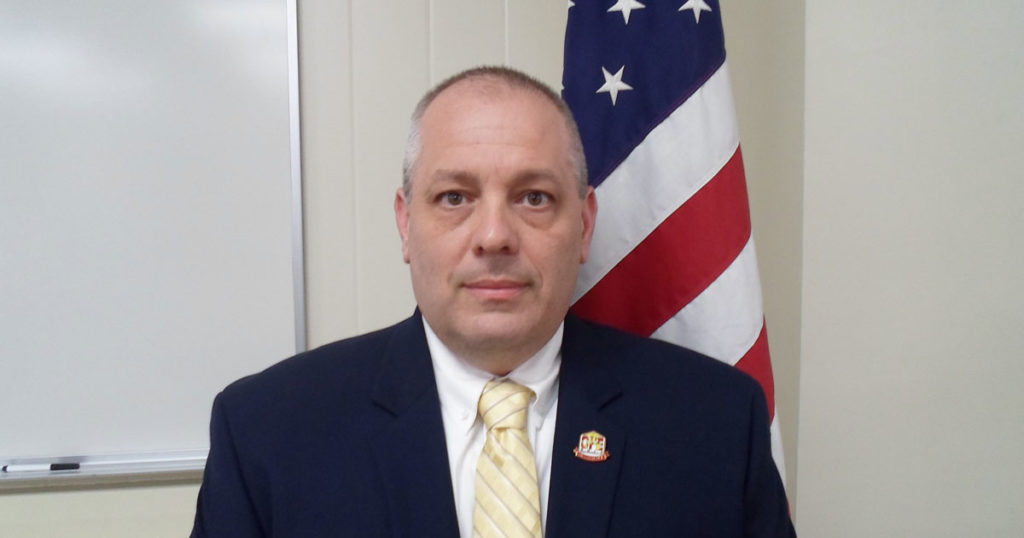Making students the teachers and getting hands-on is key to training rookie and veteran students
It’s not often you get to learn from a Hall of Famer, and when you do, you jump on it. Johnny Mason’s hazmat career spans 30 years, going back to his days as a firefighter in the U.S. Air Force. He’s been an officer with several Ohio fire departments and currently serves as captain of his local volunteer department. He holds fire officer and chief training officer designations from the Center for Public Safety Excellence. In 2016 he was inducted into the Ohio Fire Service Hall of Fame as the Ohio Fire Instructor of the Year.
Now, Mason is the program director and Fire Academy Commander for Great Oaks Career Campuses in southwest Ohio. We got to pick his brain on what it takes to be a better hazmat instructor.
What type of students do you train?
We train students and career professionals in all levels of NFPA 1072. These students range from our high school students that receive operations with PPE and product control to returning officers getting certified as incident commanders.
The bulk of our training is psychomotor based, getting students out and applying the theories. Our fire academy has a wide variety of simulators ranging from chlorine sims to over-the-road cars. We also have, adjacent to our campus, working facilities and great access to a waterway and wetlands area where we can train within a 5-minute ride.
We are accredited by the Pro Board for all our levels and deliver certification courses over a variety of venues. One thing that is unique is that Great Oaks is a career technical training center. That opens a lot of opportunities to cross professions and makes for some impactful training.
How do you mix up the training scenarios so they don’t become predictable or stale?
Having active responders evaluating and teaching the students. They bring back every relevant scenario they encounter and we incorporate them.
What’s the key to best preparing responders to handle real scenarios outside of the controlled training environment?
Developing confidence in their PPE and monitoring equipment. So that when it is a live agent being released, the hard drive of their brain can focus on interventions without having a worry about if the PPE going to work or why is this meter acting this way.
What is your biggest obstacle when conducting hazmat training?
Keeping it realistic and not falling victim to death by power point in the classroom. We have found a lot of creative ways to flip the classroom.
What wicked training problem keeps you up at night?
Continuing education. Since things keep changing at such a pace, it is easy for the base training to get outdated quickly.
What would it take to solve it?
We are lucky in Ohio. We have made progress requiring mandatory continuing education for firefighters much like our EMS providers have been doing; it will need to be applied across all disciplines.
What devices do you rely on most for realistic training?
Our simulators, both commercially made and our homemade, coupled with our HazSim. Since we added our device, we feel much more confident in air monitoring, not just in our hazmat deliveries, but it has crossed over into confined space and the firefighter 1 courses.
How, if at all, do you alter training for new responders versus seasoned veterans?
For the veteran responders, we trend towards scenario-based training with shorter review lectures. But their post-incident reviews tend to be a quite a bit more intense.
How do you keep the classroom portion of hazmat training fresh?
As we have experimented with flipping the classroom, we are seeing that we get into deeper discussions versus a straight lecture. We also have gotten really good at reading and understanding what the NFPA JPR is and finding ways to apply it outside of the classroom. Students always love a demonstration or two, also.
What’s the optimum class size and why?
We like something in the 10 to 24 range. Any more and there are problems ensuring enough reps in the psychomotor realm. Less than 10, we can wear a class out fast, and then we see some critical mistakes happening.
As a hazmat instructor, what’s been your biggest “ah-ha” teaching moment — the one that changed how you teach?
When we used one of our drones to recon an integrated terrorism scenario with our law enforcement partners. I used to be on that team that went downstream to “figure out” what exactly was going on and relay information back to the planning team to come up with an intervention.
What role does technology play in how you teach hazmat and what do you think the future holds for it?
We have really embraced simulations, and the sky is the limit with those. We also have added our drones as I said before. We can recreate events in real time. And all the way up to the incident commander level, there is nothing more valuable than real-time intelligence and information as a team is working.

